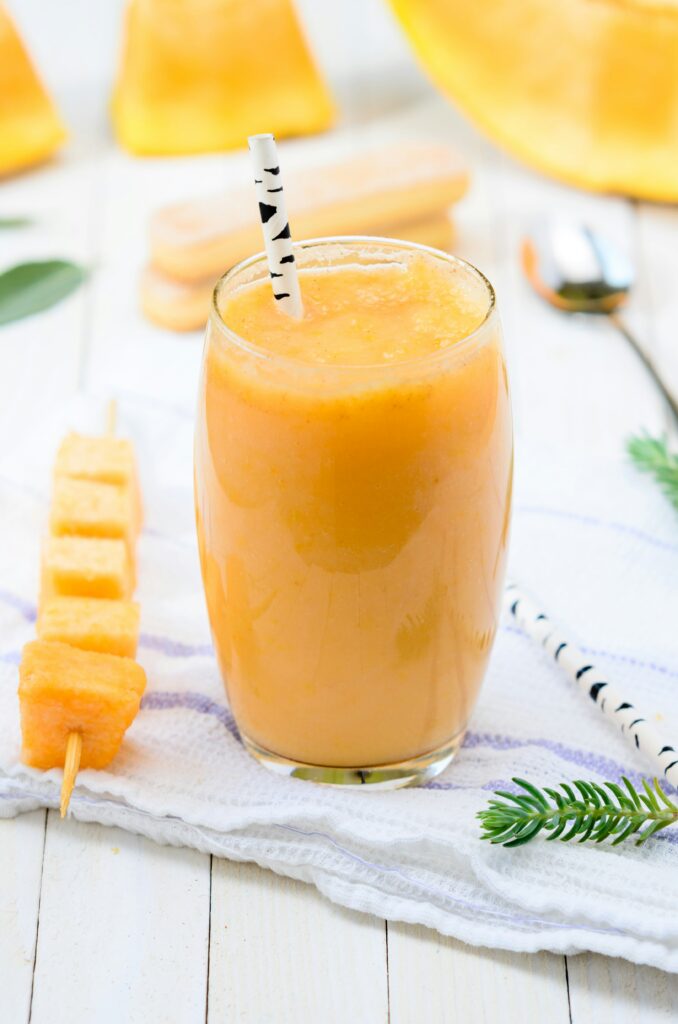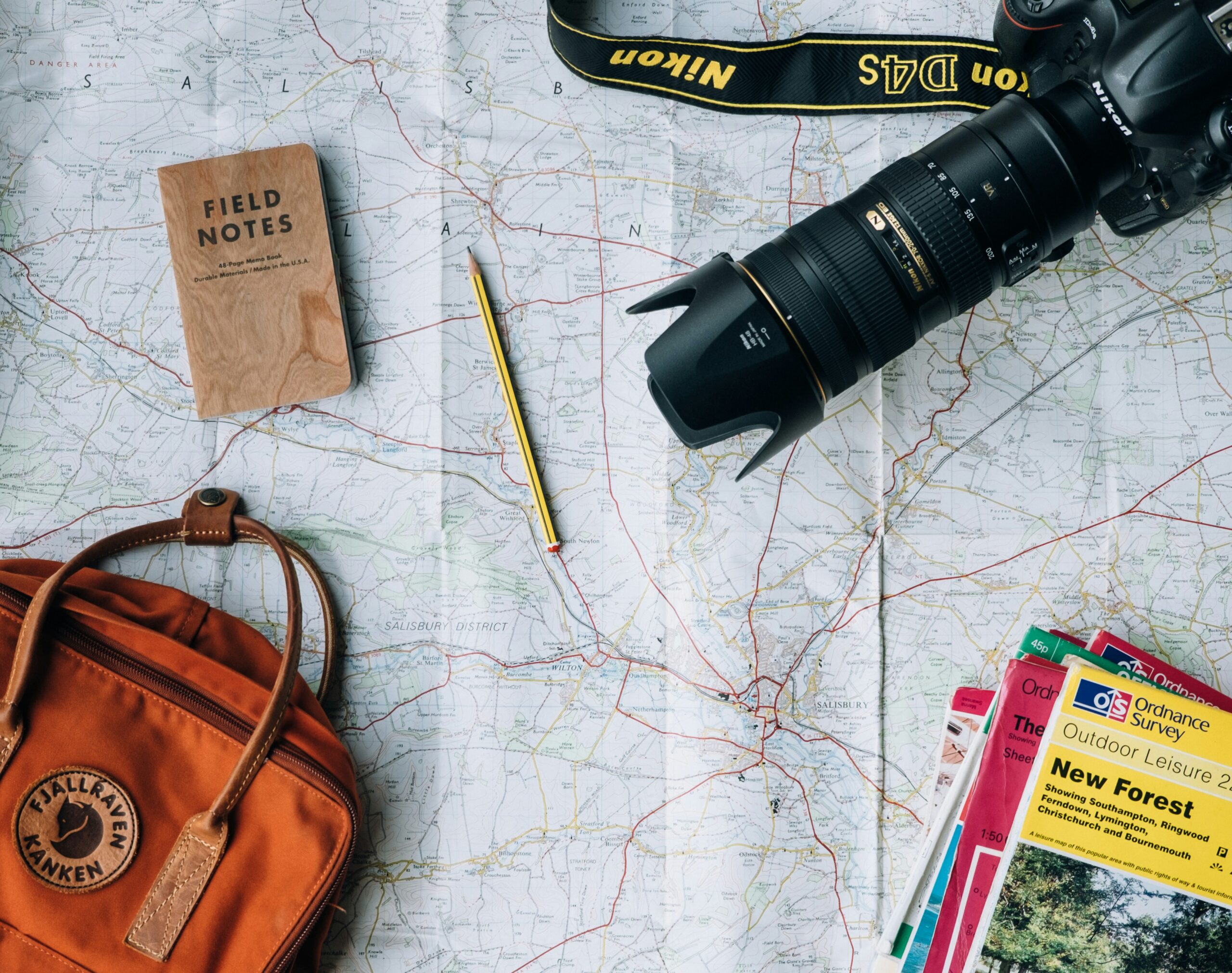If you’re a seafood lover on the hunt for the ultimate grilling experience, look no further than grilled lobster tails. But before you fire up the grill, one question remains: what tools should you use to perfect this succulent dish? In this article, we’ll guide you through the essential tools that will elevate your lobster tail grilling game, ensuring a delightful and flavorful experience every time. From sturdy tongs to a trusty meat thermometer, we’ve got you covered. So, get ready to impress your guests with perfectly grilled lobster tails that will leave them craving for more.
Grilling Lobster Tails: Your Ultimate Guide to the Right Tools and Techniques
When it comes to grilling lobster tails, having the right tools can make all the difference in achieving that perfect juicy and flavorful dish. From the type of grill to the utensils and accessories, each element plays a crucial role in ensuring a successful grilling experience. In this comprehensive guide, we will walk you through the various tools and techniques that will elevate your lobster tail grilling game.
Grill: Choosing the Right Type
The first step in preparing for a lobster tail grilling adventure is choosing the right type of grill. Charcoal and gas grills are the two most popular options, each with its own unique advantages.
Benefits of Charcoal Grills for Lobster
Charcoal grills are often favored by grilling enthusiasts for the distinct flavor they impart on the food. When it comes to lobster tails, the smoky aroma and charred taste achieved through charcoal grilling can take your dish to the next level. Additionally, charcoal grills provide high heat and excellent control, ensuring a perfectly cooked lobster tail every time.
Considering a Gas Grill for Convenience
On the other hand, gas grills offer unmatched convenience and ease of use. With just the turn of a knob, you can have your grill up and running in no time. This is especially beneficial when grilling lobster tails, as they require precise temperature control. Gas grills provide the flexibility to adjust the heat levels effortlessly, allowing you to achieve the ideal cooking temperature for your lobster tails.
Understanding Grill Temperatures for Cooking Lobster
Regardless of the type of grill you choose, understanding grill temperatures is vital for cooking lobster tails to perfection. Lobster tails are best grilled between 400°F and 450°F. This ensures that the meat is cooked through while retaining its tenderness and juiciness. Investing in a reliable grill thermometer can help you achieve the desired temperature accurately, taking the guesswork out of the equation.

Grill Grates: Enhancing the Grilling Experience
Now that you have your grill ready, let’s talk about grill grates. The type of grates you use can greatly influence the overall flavor and texture of your lobster tails.
Reasons to Use Cast Iron Grill Grates
If you’re seeking those beautiful sear marks on your lobster tails, cast iron grill grates are the way to go. These grates provide exceptional heat retention and distribution, allowing for precise control over the cooking process. The deep ridges on cast iron grates leave captivating grill marks, enhancing the visual appeal of your dish. Moreover, their durability ensures consistent performance over time.
Importance of Non-Stick Grill Grates
While cast iron grates offer an excellent grilling experience, non-stick grill grates provide their own set of advantages. Non-stick grates prevent the lobster tails from sticking to the surface, minimizing the risk of tearing or flaking. This ensures that each lobster tail retains its shape and succulence, resulting in a delightful dining experience.
Cleaning and Maintaining Your Grill Grates
Proper maintenance of your grill grates is crucial for their longevity and performance. After each grilling session, make sure to clean the grates thoroughly to remove any food particles or grease. Regular brushing and occasional oiling will prevent rust and preserve the quality of your grates. By taking care of your grates, you can ensure they continue to deliver delectable lobster tails for years to come.
Quality Grilling Utensils: Your Secret to Grilling Success
Grilling lobster tails requires precision and finesse, and having the right grilling utensils can make all the difference in ensuring a seamless cooking process.
Essential Grilling Utensils
To start your grilling journey off right, there are a few essential utensils you’ll need. A sturdy pair of long-handled tongs is essential for flipping and handling the lobster tails without damaging their delicate flesh. A reliable grilling spatula is another must-have, allowing you to carefully lift the tails off the grill and plate them with grace. Additionally, investing in a high-quality basting brush will enable you to apply marinades, butters, or sauces to enhance the flavor profile of your lobster tails.
Features of a Good Grilling Spatula
When it comes to selecting a grilling spatula, there are a few key features to keep in mind. Look for a spatula with a broad and sturdy stainless steel blade that can support the weight of the lobster tails without bending. A long handle with a comfortable grip is also crucial for maneuvering the spatula with ease.
Why Use Long-Handled Tongs
Long-handled tongs are a grilling essential, especially when it comes to lobster tails. The length allows you to keep a safe distance from the heat while maintaining full control over the tails. This ensures that you can maneuver the lobster tails with precision, achieving an even cook and preventing any mishaps such as dropping or overcooking.

Meat Thermometer: Ensuring Perfectly Grilled Lobster Tails
To achieve that ideal doneness in your lobster tails, using a meat thermometer is a game-changer. It takes the guesswork out of grilling and ensures that your lobster tails are cooked to perfection.
Importance of Using a Meat Thermometer for Lobster
Lobster tails need to reach a safe internal temperature of 145°F to ensure they are fully cooked and safe to eat. By using a meat thermometer, you can monitor the temperature accurately and avoid undercooking or overcooking your lobster tails. This results in tender, succulent meat that is neither underdone nor dry.
How to Properly Use a Meat Thermometer
Using a meat thermometer is simple, and with a little practice, you’ll become a pro. Start by inserting the thermometer probe into the thickest part of the lobster tail, being careful to avoid touching the bone or the grill. Wait for a few seconds until the temperature reading stabilizes, and then remove the lobster tail from the grill if it has reached the desired temperature.
The Best Type of Meat Thermometer for Lobster
When choosing a meat thermometer for grilling lobster tails, opt for an instant-read thermometer for quick and accurate results. Look for a thermometer with a long probe that can reach the center of the lobster tail easily. Digital thermometers with clear temperature displays are particularly user-friendly and ensure accurate readings every time.
Brushes: Enhancing Flavor and Presentation
Grilling lobster tails is not just about cooking; it’s also about adding exciting flavors and enhancing the visual appeal. A grilling brush is an indispensable tool that allows you to achieve both.
Why Use a Grilling Brush
A grilling brush is an essential accessory for adding marinades, sauces, or butters to your lobster tails. It enables you to evenly distribute flavors, ensuring that every bite is infused with deliciousness. Moreover, a brush helps create an appetizing glaze and sheen on the lobster tails, elevating their visual appeal.
Types of Brushes Ideal for Grilling Lobster
When it comes to choosing the right grilling brush, opt for one with heat-resistant bristles to withstand the high temperatures of the grill. Silicone brushes are a popular choice as they are easy to clean, odor-resistant, and won’t shed bristles onto your food. Basting brushes with an angled head provide better control and precision when applying sauces or marinades to your lobster tails.
How to Use a Grilling Brush for Applying Sauces
To ensure even coverage of your lobster tails with sauces or marinades, follow this simple technique. Dip the brush into the desired sauce, making sure the bristles are fully coated. Then, gently brush the sauce onto the lobster tail, starting from the thicker end and working your way towards the tail. Repeat the process on all sides, ensuring that the lobster tails are well-coated before grilling to perfection.

Grill Basket: Making Grilling Lobster Tails Effortless
A grill basket is a useful tool that makes grilling lobster tails a breeze, especially when dealing with tail pieces or small-sized tails.
Benefits of Using a Grill Basket for Lobster
A grill basket offers several advantages when grilling lobster tails. Firstly, it prevents the tails from falling through the grill grates, providing a secure and stable cooking surface. Secondly, it promotes even cooking by allowing heat to circulate around the tails, ensuring consistent doneness. Lastly, a grill basket prevents the tails from drying out by retaining their natural juices, resulting in moist and succulent meat.
Factors to Consider When Buying a Grill Basket
When selecting a grill basket for lobster tails, consider its size, construction, and functionality. Opt for a basket that can comfortably accommodate the size and quantity of lobster tails you plan to grill. Stainless steel baskets with small perforations are ideal for preventing the tails from escaping while ensuring proper heat circulation. Additionally, choose a basket with sturdy handles for easy flipping and maneuvering.
How to Use a Grill Basket for Lobster Tails
Using a grill basket for lobster tails is straightforward. Begin by preheating your grill and lightly oiling the basket to prevent sticking. Then, place the lobster tails inside the basket, ensuring they are arranged in a single layer for even cooking. Carefully place the loaded basket onto the grill grates and cook the tails, flipping occasionally, until they reach the desired doneness. The grill basket simplifies the grilling process and allows you to focus on perfecting the flavors.
Barbecue Gloves: Prioritizing Safety and Comfort
When it comes to grilling lobster tails, ensuring your safety and comfort should be top priorities. Barbecue gloves offer an excellent solution to protect your hands from the heat and provide a secure grip on your cooking tools.
Why You Need Barbecue Gloves
Grilling lobster tails often involves direct contact with high heat and flames. Barbecue gloves act as a barrier, protecting your hands from burns and ensuring a safe grilling experience. In addition, gloves provide a firm grip on utensils and accessories, allowing you to handle the lobster tails and other ingredients with confidence and precision.
Choosing the Right Barbecue Gloves
When selecting barbecue gloves, prioritize heat resistance and dexterity. Look for gloves made of high-quality materials such as heat-resistant silicone or aramid fabric, which can withstand extreme temperatures. Ensure that the gloves fit well, providing a snug yet comfortable grip for optimal control during grilling. Additionally, consider gloves with a textured or non-slip surface for added safety.
Safety Considerations While Using Barbecue Gloves
While barbecue gloves offer protection, it’s important to practice proper safety precautions while grilling. Avoid direct contact with open flames or hot surfaces, and always use tongs or utensils to handle the lobster tails. Additionally, keep a safe distance from the heat source and have a designated safe area for placing hot utensils or accessories. By combining barbecue gloves with responsible grilling practices, you can ensure a safe and enjoyable lobster tail grilling adventure.
Grill Cover: Shielding and Preserving Your Grill
A grill cover is an essential accessory that helps protect your grill from the elements, ensuring its longevity and performance.
The Role of a Grill Cover in Grilling
A grill cover shields your grill from dust, dirt, rain, and other environmental factors when not in use. This prevents rusting, corrosion, and damage, prolonging the lifespan of your grill. Moreover, a cover preserves the quality of your grill grates, utensils, and accessories, ensuring they remain in optimal condition for future grilling endeavors.
Selecting the Suitable Grill Cover
When choosing a grill cover, consider the size and dimensions of your grill to ensure a proper fit. Opt for covers made of durable and weather-resistant materials such as polyester or vinyl, which offer protection against rain, UV rays, and other outdoor elements. Additionally, look for covers with features like adjustable straps or fasteners to secure them in place, even during windy conditions.
Correct Usage and Maintenance of a Grill Cover
To make the most of your grill cover, it’s essential to use and maintain it correctly. Always cover your grill when it is cool and not in use, ensuring it is completely dry to prevent moisture accumulation. When cleaning the cover, follow the manufacturer’s instructions, usually involving gentle cleaning with mild soap and water. Regularly inspect the cover for any signs of wear and tear, and replace it if it becomes damaged to maintain the optimal protection for your grill.
Marinade Injector: Enhancing Flavor from Within
To infuse your lobster tails with flavorful marinades, a marinade injector is an indispensable tool. It allows you to add moisture and taste directly into the meat, resulting in incredibly succulent and delicious lobster tails.
Benefits of Using a Marinade Injector
A marinade injector allows you to penetrate the lobster tails’ flesh, ensuring that the flavors reach deep within. This enhances the taste, texture, and juiciness of the meat, taking your lobster tails to new dimensions of flavor. Injecting marinades can also help tenderize the meat, ensuring a moist and tender mouthful with every bite.
Choosing the Right Marinade Injector
When selecting a marinade injector, opt for one made of food-grade stainless steel for durability, hygiene, and easy cleaning. Look for a model with a large capacity, allowing you to inject ample marinade without constant refilling. Additionally, select an injector with interchangeable needles of different thicknesses, enabling you to adjust the injection amount and accommodate different marinade consistencies.
How to Inject Marinade into Lobster Tails Effectively
To inject marinade into lobster tails effectively, follow these simple steps. Prepare your favorite marinade, ensuring it is well-mixed and free of any obstructions. Insert the needle of the marinade injector into the thickest part of the lobster tail, angling slightly to avoid the shell. Slowly press the plunger, releasing the marinade into the meat as you gradually withdraw the needle. Repeat the process at multiple points along the tail, evenly distributing the marinade for maximum flavor infusion.
Vegetable Grill Rack: Balancing Your Grilled Meal
While grilling lobster tails takes center stage, complementing them with grilled vegetables is a fantastic way to create a well-rounded and flavorful meal. A vegetable grill rack comes in handy for perfectly grilling an array of vegetables alongside your lobster tails.
Why Have a Vegetable Rack While Grilling Lobster
Grilling vegetables brings out their natural sweetness and adds a delightful charred flavor. By using a vegetable grill rack, you can prevent smaller vegetables from falling through the grill grates while simultaneously achieving an even cook. Grilling vegetables alongside your lobster tails not only elevates the flavor profile of your meal but also adds visual appeal and nutritional balance.
Choosing a Suitable Vegetable Grill Rack
When selecting a vegetable grill rack, consider the size of your grill and the variety of vegetables you would like to grill. Opt for a rack with ample space between the bars to accommodate vegetables of various sizes. Additionally, choose a sturdy rack made from high-quality materials that can withstand high temperatures and repeated use.
Utilizing a Vegetable Grill Rack for a Balanced Meal
To make the most of your vegetable grill rack, prepare a diverse assortment of vegetables for grilling. From bell peppers to zucchini, the options are limitless. Toss the vegetables in olive oil, sprinkle with seasoning, and place them in the grill rack. Grill alongside your lobster tails until they achieve a tender and slightly charred perfection. The combination of grilled lobster tails and flavorful grilled vegetables ensures a complete and satisfying meal that will impress your guests.
In conclusion, grilling lobster tails requires the right tools and techniques to achieve incredible flavors and textures. From the type of grill to the utensils and accessories, each component plays a pivotal role in enhancing your grilling experience. By selecting the appropriate tools, such as the grill type, grill grates, utensils, thermometer, brushes, grill basket, gloves, grill cover, marinade injector, and vegetable grill rack, you can elevate your lobster tail grilling game to new heights. So, fire up that grill, gather your tools, and embark on a grilling adventure that will impress your taste buds and leave you craving more. Happy grilling!

